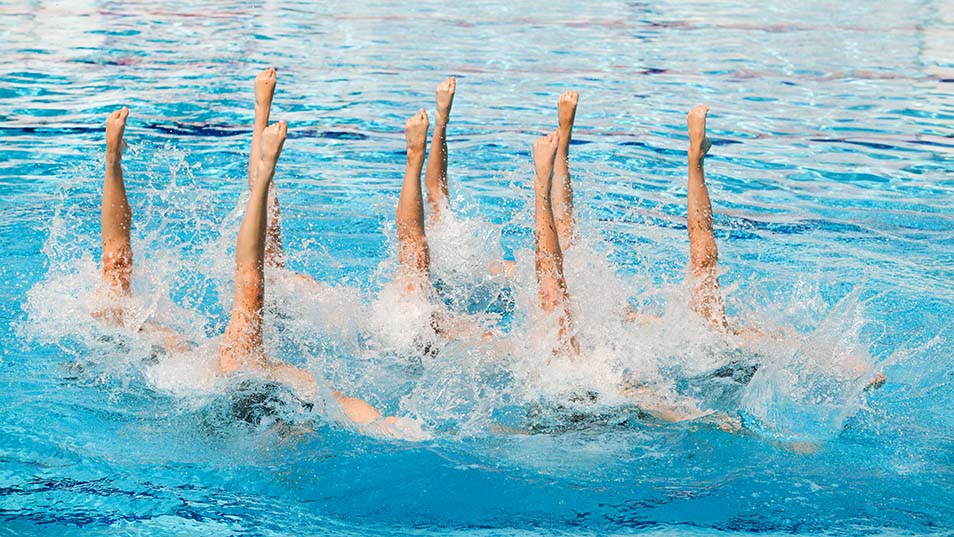Contact us
401 W. Kennedy Blvd.
Tampa, FL 33606-13490
(813) 253-3333
The subtleties of everyday sounds typically pass unnoticed.

The music will be played underwater, as well as through speakers in the UT Aquatic Center for the audience.
The slap of flashcards hitting the ground, a leather lanyard snapping against itself, the scratch of a pen writing on paper or the ping of a metal water bottle being flicked — it’s not exactly the soundtrack that comes to mind when you think of a graceful water dance. But the 23 students in MUS 108, led by instructor John Nichols III, think otherwise.
In a collaboration with the Tampa Bay SynchRays, a community synchronized swimming club, the students in Nichols’ Recording and Electronic Music class are creating AquaChoreoSonics. Synchronized swimmers choreograph a production to a soundtrack of experimental music, and they’ll perform in UT’s pool on Sunday, Oct. 17, 1-2 p.m. Guests are welcome to listen from the pool deck or under the water.

“It’s experimental music on every level — we’re experimenting with the collaboration, and the students experimented with making the recording and with how to make their pieces,” said instructor John Nichols III. Photo courtesy of Nichols
More UT News